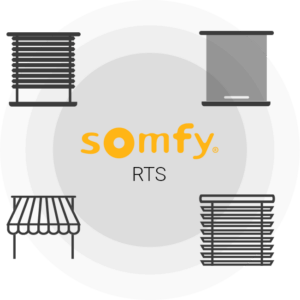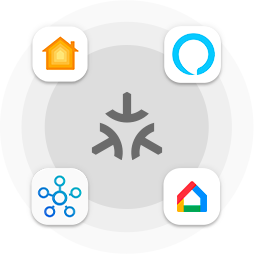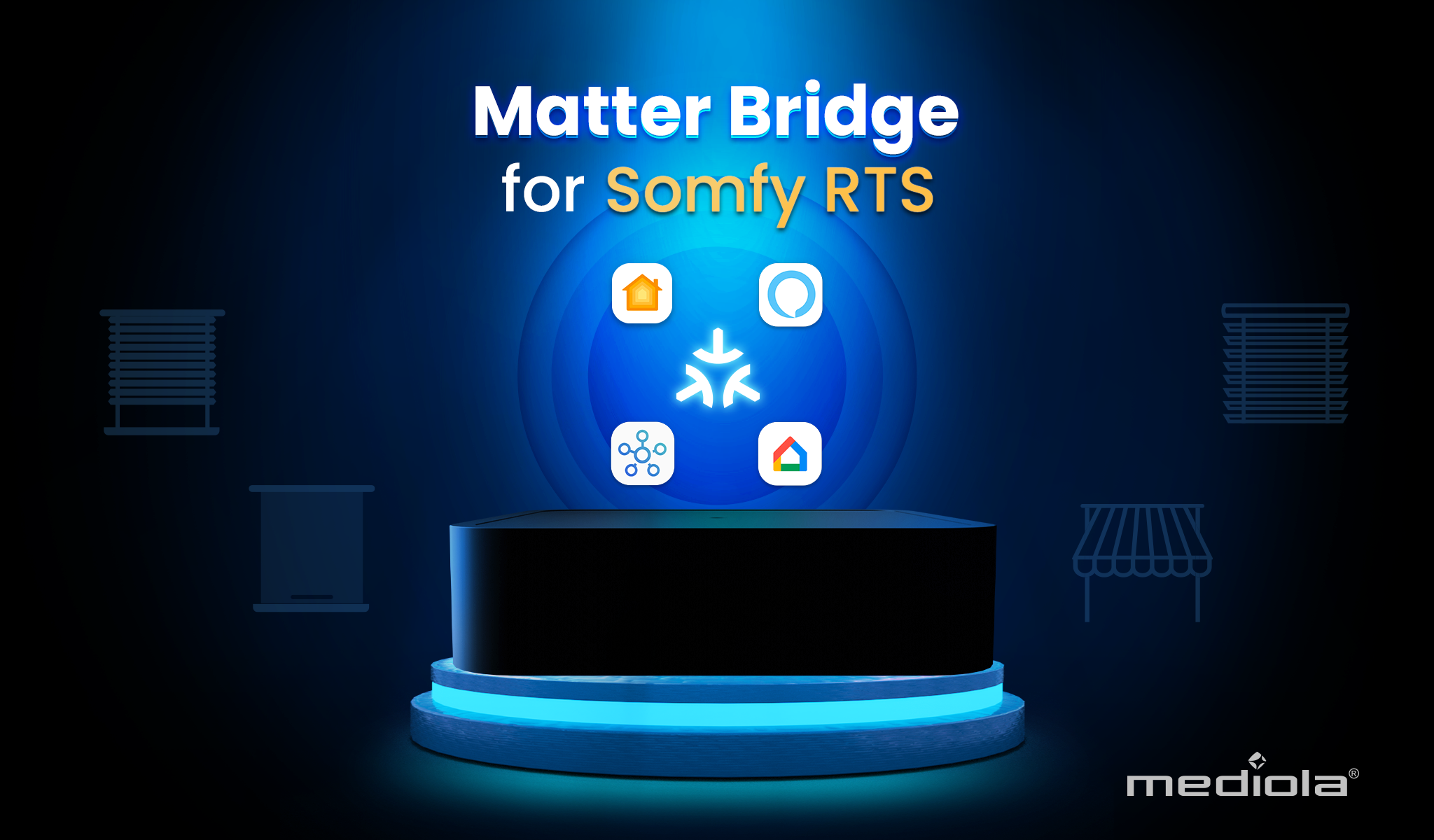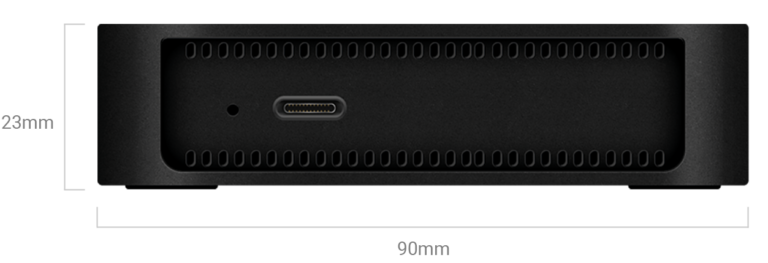The widely installed blinds and sun protection systems from Somfy or other brands, equipped with the RTS wireless protocol, can now be seamlessly connected to the new universal super-standard Matter and the smart home platforms of Apple, Google, Amazon, and Samsung. To facilitate this integration, mediola is introducing the world’s first officially certified Matter Bridge designed to include popular Somfy RTS devices.
With the introduction of Matter Bridges for Somfy RTS, the mediola – connected living AG has once again affirmed its reputation as a smart home pioneer and specialist in intelligent solutions for windows, doors, and facades—particularly in the control of blinds and sun protection. This internationally unique solution from mediola enables the seamless integration of Somfy RTS devices with the open and interoperable Matter standard. The bridge acts as a translator for products equipped with the manufacturer-specific RTS wireless protocol, converting them into the new IPv6-based smart home standard. The RTS wireless protocol was developed by Somfy, the world leader in blinds and sun protection drives, in the late 1990s. Since then, it has become one of the most reliable and widely used wireless protocols in the field of building technology worldwide. It is still highly valued by professionals and installers for its simplicity and is used by many other manufacturers in their own branded products.
Through the Matter Bridge for Somfy RTS, users can now easily and effectively integrate their installed roller shutters, blinds, or awning drives from Somfy or other brands controlled via RTS radio into the major international smart home ecosystems of Apple, Google, Amazon, Samsung, and more. These devices can seamlessly combine with a wide range of other devices and brands, allowing the automation and control via apps and respective voice assistants.



This provides high added value, especially for owners of these permanently installed and highly durable blinds and sun protection products. It enables them to effortlessly connect their older existing products with new device generations and current trend products in a unified solution. The smart interaction of old and new results in a fully connected smart home, offering not only increased convenience but also enhanced security and energy efficiency. This is beneficial for the environment and helps reduce costs.
Revolutionary Interoperability in Smart Home 2.0
Thanks to innovative bridge solutions like mediola’s, the availability of high-quality Matter-compatible products is increasing, which accelerates the transformative shift to Smart Home 2.0. The intuitive and user-friendly handling, cross-brand user experience, and uncompromising platform independence mark a turning point in overcoming the historical technological barriers and brand boundaries, that characterize the ending era of Smart Home 1.0. For Matter, the choice between an Android device or an iPhone, or the preference for a specific voice assistant, is irrelevant. This will comprehensively and sustainably transform the landscape of smart building control for residential and commercial properties. To drive the development towards Smart Home 2.0, mediola offers its innovative technology in the form of Matter Bridges or modules for native Matter support as an OEM solution for companies in the building technology industry.
We are thrilled that with the newly developed Matter Bridge, we can offer millions of customers the opportunity to upgrade their living environment to the highest level of smart technology. The innovative bridge allows existing blinds and sun protection systems equipped with the older but widely used Somfy RTS wireless protocol to be seamlessly integrated into the most advanced and progressive smart home solution on the market, where they can be combined with the latest smart gadgets, says Bernd Grohmann, CEO of mediola. “We are convinced that the Matter integration of the vast majority of already installed devices not only meets the needs of many customers but is also another significant step towards Smart Home 2.0, Grohmann adds.


